
WATCH
Practice
CHAPTERS
DISCLAIMER
They must recognize opportunities to participate, work towards shaping the terms of their participation and fight obstacles to achieve media democracy
Communal power. They can pull their knowledge to construct collective intelligence, and use their collective power to promote their own interests and ensure content is distributed more broadly
In what way do critics frame the media democracy debate “pessimistically”?
What kind of power do consumers have within participatory culture?
What are consumers’ responsibilities given this power?
Wrapping up Convergence Culture.
What is the main difference between consumers’ to institutions’ motivations to promote participatory culture?
Find how many of teen Internet users are in fact also content creators.
Facts & Figures
Test your knowledge by answering these questions about the Conclusion.
Conclusion
GLOSSARY
Critics focus on the obstacles stemming from increased concentration of big media conglomerates, and look at consumers as victims and the media as manipulators.
Why is media convergence “all about the democratization of media”?
Jenkins, H. (2008) Convergence Culture. Where Old and New Media Collide. U.S.A. New York: New York University Press.
Jenkins, H. with Purushotma, R., Clinton, K., Weigel, M. and Robinson, A. (2009). Confronting the Challenges of Participatory Culture: Media Education for the 12st Century. Retrieved from https://mitpress.mit.edu/sites/default/files/titles/free_download/9780262513623_Confronting_the_Challenges.pdf
READ
CREATIVE TEAM
THE AUTHOR & THE BOOK
Media convergence, as we have seen so far, is all about the democratization of media. Convergence gives rise to shifts from medium specific content to multimedium content, from dependence on one-way communication to back-and-forth communication, and from top-down motivated media consumption to bottom-up participatory models. Democratic media can take various shapes, focusing on content; when media is used to further democratic ends, or emphasizing process; when an environment conductive to democracy is created, where the means of production are open to the public. In any case, in the era of democratic media, the public is more empowered than ever before to join participatory culture. Indeed, participation has its economic motivations for both corporations and governments, yet regardless of the motives it changes the ways institutions operate and how individuals think about their relation to the media. Each case study we have discussed demonstrates what happens when people consume and produce media not only as individuals but also as communities. How communities pull their knowledge to construct collective intelligence, and use their collective power to promote their own interests and ensure content is distributed more broadly; be it in the realm of popular culture (as with the Survivor spoiler community), education (as in the Harry Potter Wars) or politics (as in the case of the 2004 Alphaville elections).
Many critics frame the media democracy debate pessimistically, focusing on the obstacles stemming from increased concentration of big media conglomerates, and looking at consumers as victims and the media as manipulators. However here we took a more optimistic look at the media landscape, under the assumption that increased participation is a positive force in people’s lives, a political power if you will. But with great power comes great responsibility. Consumers must recognize opportunities to participate, work towards shaping the terms of their participation and fight main obstacles to achieve media democracy (e.g. corporate control on intellectual property, the digital divide etc.). Furthermore, they must not forget that both traditional and new media can contribute in different ways; the power of grassroots media can be harnessed for diversification, while the power of broadcast media can be used to amplify. In short, people must stop looking at media as threats but rather as resources, and further media education for both children and adults. By use of affinity spaces as an alternative to formal educational settings, knowledge communities can help promote a more democratic, involved and productive society.
“Welcome to Convergence Culture, Where Old and New Media Collide, where grassroots and corporate media intersect, where the power of the media producer and the power of the media consumer interact in unpredictable ways. Convergence culture is the future, but it is taking shape now. Consumers will be more powerful within convergence culture – but only if they recognize and use power as both consumers and citizens, as full participants in our culture.” - Henry Jenkins

It enables content to flow between multiple media platforms. It shifts communication to a more back-and-forth rather than one-way model. And it allows top-down motivations to co-exist with grassroots ones
While consumers are empowered and enriched by their participation, institutions have primarily economic motives to promote participation
LITERATURE